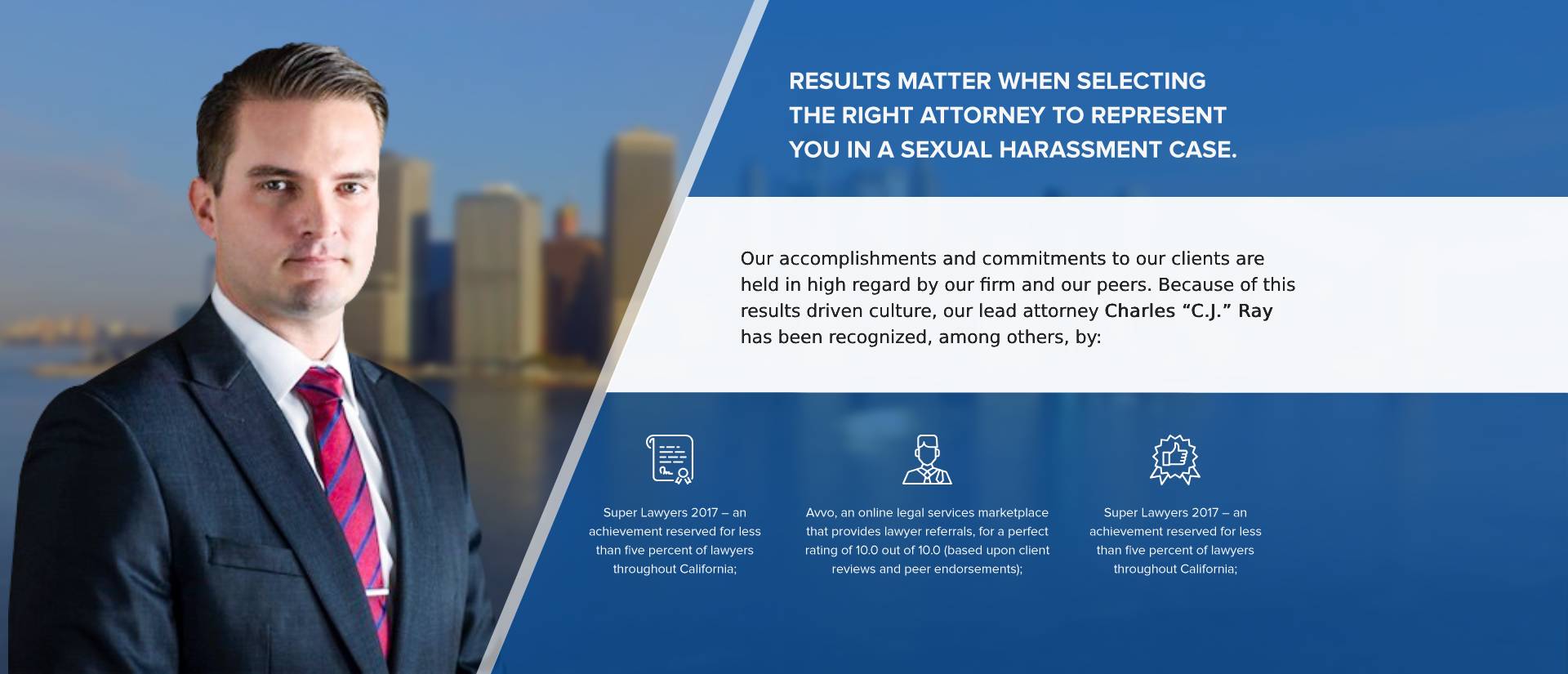Sexual harassment is regrettably a corrosive fact of our current cultural landscape. While the subject has received a recent boost in the public consciousness, this is an issue which was long overdue being addressed. Aside from the damaging behavior and attitudes that our society has until shamefully recently considered acceptable, our workplaces have long been riddled with examples of harassers making co-workers lives difficult. It's a positive step that the dialogue has become significantly more open in these matters, but it remains the case that sexual harassment is prevalent. While the Equal Employment Opportunity Commission figures show that the number of lawsuits in the US brought as a result of sexual harassment in 2017 totaled almost 20,000, it's also worth noting that an EEOC study estimated that around 87% of victims of sexual harassment never file a complaint. Whichever way you slice it, that looks a lot like an epidemic.
To suggest that bringing more lawsuits is the solution to sexual harassment in the workplace would be naive, and ignores our responsibility as a society to tackle the root causes of this and related issues. That said, your reaction to receiving sexual harassment is vital to protecting your individual right to a safe working environment.
Let's Dispel Some Myths
One of the problems inherent in tackling sexual harassment is that we have such a messy narrative that surrounds the issue. While people's lives are being made miserable every day they go to work, we avoid providing clarity to the issue by buying into the myths that clog up our ability to respond responsibly.
Firstly, the myth of a specific gender being primarily the victim or perpetrator of sexual harassment. While there is a tendency for women to be the reported victims of sexual harassment, studies have shown that male victims aren't that far behind (in 2017 the EEOC report shows that approximately 38% of cases were brought by men). Let's be absolutely clear –this isn't some kind of twisted competition as to who gets harassed the most, it is simply another indicator of how our relationship to gender expectations can be toxic.
On the subject of gender, it's also worth noting that sexual harassment does not exclusively involve members of the opposite sex. Male-on-male and female-on-female harassment rears its head in the workplace, and this certainly doesn't necessarily occur on occasions where the perpetrator is homosexually oriented.
Receiving sexual harassment is also not the sole domain of those considered to be classically physically attractive either. This is an issue that crops up in defense of perpetrators on occasion, where employers dismiss the credibility of a victim due to the perception that the perpetrator couldn't possibly find them sexually attractive.
The truth is, over the decades we've perpetuated an image of harassment as the suited CEO groping the younger attractive personal assistant, and even today we seem to have a knee-jerk struggle against anything outside of those boundaries. The facts show us that victims of sexual harassment are all around us –your friends, your neighbors, your grandparents -and the motives for that harassment are not as cut-and-dried as we think. It is incumbent upon us to take all potential cases of sexual harassment seriously.
Recognizing Sexual Harassment
A relatively common theme that seems to underlie both victims' reluctance to report sexual harassment, and society's tendency to dismiss it, is disagreement as to what actually constitutes harassment. If we're being purely logical, we would simply all agree that any sexually-themed contact –physical, verbal, or otherwise -of an unwanted nature, would be considered as sexual harassment. However, in discussions of this nature we tend to cloud the issue contextually. A common defense is that the sexual contact or comment was not intended to be taken seriously, or the perpetrator misread signals from the victim. So, it's important to be clear about what is legally the definition of sexual harassment in the workplace.
Title VII of the Civil Rights Act of 1964 defines sexual harassment as two-fold: quid-pro-quo and hostile working environment. In addition to these federal definitions, the state of California has committed to making sexual harassment a priority in legislation moving forward, alongside already being among the states which most stringently apply this legislation across the country.
A quid pro quo violation is one in which the harasser either offers/implies “reward” in exchange for sexual favors or threatens/implies consequences if their sexual advances are rejected.
A hostile work environment situation arises where unwanted sexual activity takes place in a workplace, and any committing, allowance, or encouragement of these actions by the employer create a working atmosphere that is uncomfortable orunsafe for the victim. This environment can also arise where a quid pro quo violation is allowed by the employer to continue.
While those are the hard and fast definitions of the types of sexual harassment, you should also be aware that sexual harassment can be committed in a variety of ways. Physical contact, verbal or written comments of a sexual nature, explicit photographs, text messages, and emails. There are few official guidelines as to the forms sexual harassment can take, and with changes in technology occurring at a swift pace, the methods of receiving sexual harassment evolve accordingly.
Alongside the actual method of harassment, in order to determine the validity of any case the courts will look at the following:
-
How often the conduct occurred
-
Whether the conduct was hostile or patently offensive
-
Whether the alleged harasser was a co-worker or someone in a supervisory position
-
Whether the harassment was directed to multiple persons or purely to one accuser.
-
Whether other members of staff alsoengaged in the harassment
As you can see, while in official parlance sexual harassment must fall under one of two definitions, the actual scope of how a person can be considered to be harassed is actually rather broad. In essence, if you are made to feel uncomfortable by behavior you consider to be sexual in nature by any other employee of the company, it is your right to take immediate action.
Document Everything
In the event of receiving sexual harassment, your thoughts aren't likely going to immediately shoot to “how can I act in a legally prudent manner”. The first thoughts of most of us would probably be on the subject of our own safety, as to how we can come to work every day and function without the additional stress and pressure caused by a harasser. However, it is in the best interest of your continued safety and comfort in the workplace that you document every reactionary and proactive step you take in halting the harassment. Yes, in an ideal world it wouldn't be your responsibility to have to act in a self defensive manner, but the reality of the situation is that harassment is unlikely to cease if you don't. The other fact to take into consideration is, legally the onus is squarely on you to prove that harassment has taken place, and that it falls into one of the categories listed previously. Therefore –whether you foresee the issue headed to court or not –you need to document the process from the outset. Retain copies of any sexually explicit emailed/text messaged contact –however unsavory. Keep a dated journal of events. Every step you personally take to stop the harassment should either take the form of an electronic or durable medium (emails, letters, etc.), or at the very least be supported by these –and make sure to keep backups of these outside of the workplace. This will not only help you if the case heads to court, but your rebuttal in these official forms may have a much stronger impact in halting the harassment itself.
Respond Personally
Solet's begin with the actionable steps. You've experienced sexual harassment in the workplace, and can confirm that this is in the form of quid pro quo, or it's forcing you to work in a hostile environment. Your first step is ideally to personally make it known to the alleged harasser that the conduct is unwanted. Your first step is to make clear to them that the contact is unwanted. If you don't feel comfortable informing them face-to-face –this isn't anything to be ashamed of, confrontation of this nature can add to your discomfort and stress –you may wish to do so in the form of a letter or email. In the interests of documenting the process, even if you do confront your harasser in person, it's worthwhile following up with an email confirming that you do not wish their conduct to continue. Hopefully, having made clear your feelings on the matter, this will nip the behavior in the bud. If the conduct continues, you should take additional official steps.
Refer to the Employee Manual
Most workplaces will have a procedure in place with regard to discrimination and harassment and, particularly in large companies, this will be outlined in the employee manual or handbook. While it may sometimes seem like the forward course of action is obvious to you, in order to ensure that you can show you have taken every required action to halt any harassment you have experienced, you should confirm what your employer's official stance on sexual harassment is –whether that's a requirement for you to inform your immediate supervisor, or if there's a required format escalation should take –and begin to take that path, or one as close as possible to that path.
ApproachHuman Resources
The company absolutely has a responsibility to take steps in event of alleged sexual harassment, and in order to escalate the matter up the chain of command, at some point you will be required to report the matter to the Human Resources manager.
However, here is where things can also get a little bit tricky. One of the reasons victims are often reluctant to take reporting sexual harassment to this level and beyond is that they are afraid of any retaliatory action the company might take against them –that they'll be passed over for promotions because they're seen as a “trouble maker”, or suchlike. It is strictly illegal for companies to take retaliatory action against employees who file complaints, but that doesn't by any means say that it doesn't still happen. Therefore, it may also be worth your time to obtain a copy of your employee record prior to approaching HR on the matter, to evidence your heretofore competence and good conduct. Once again, in an ideal world you wouldn't have to take steps to protect yourself, but the reality is we don't live in the ideal world.
File an Administrative Charge
You've attempted to cease the harassment personally, you've diligently followed company procedure in reporting sexual harassment, and you've scaled the hierarchy of the business as far as you are able to –but the harassment has continued. As a result, you have decided that it is now necessary to undertake a civil lawsuit. Before this can happen, you are required to send your complaint to the EEOC. Your case will be subject to assessment and investigation, and it will be determined whether your case is sufficient to warrant litigation. If approved, you will be provided with a “right to sue” document, and can proceed accordingly.
As with any legal matter, it is always advisable to consult a professional at the earliest opportunity. Sexual harassment law and its application can be complex, and their expertise can assist you with everything from determining whether you have a strong enough case to proceed toward litigation, to actually navigating the various hoops along the way. It's always worth bearing in mind that in the event of a successful lawsuit, your employer will be required to not just provide the required compensation, but also to pay your legal costs.
It is undeniably regrettable that in the current legal climate the onus will always be on the victim to both substantiate harassment committed against them, and take prudent steps to attempt to halt it. As a victim, this can add to the stress and discomfort of an already extremely difficult situation. However, by continuing to take these kinds of proactive, official and well-documented steps against harassers and the systems that support them, a dialogue is being kept open. This dialogue bolsters the narrative that this kind of toxic environment is unacceptable, and will help to maintain safer, more pleasant workplaces for ourselves and future generations.
Looking for Sexual Harassment Lawyer Near Me
If you are in need of advice or guidance for your sexual harassment case in California, contact our sexual harassment lawyer at 800-905-1856 or look further through our website and read more articles to better acclimate yourself to your options.



